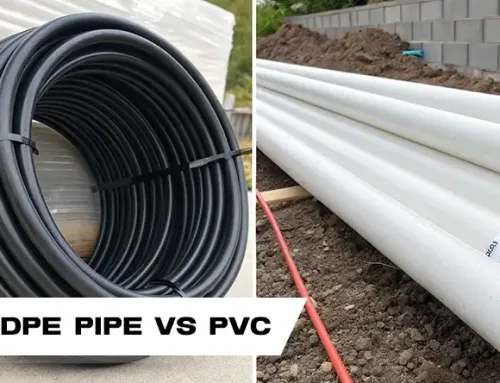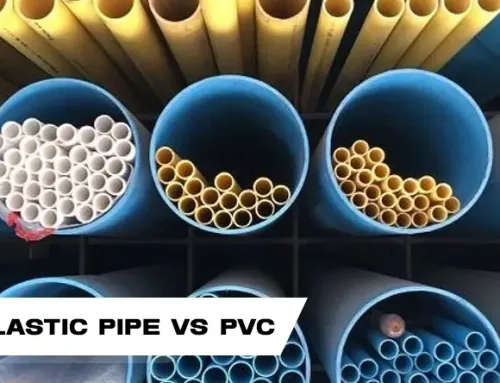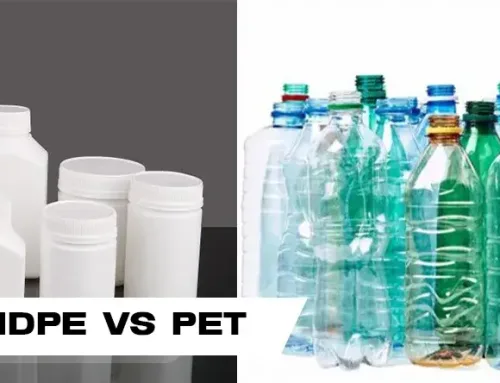Selecting the appropriate polyethylene grade ensures optimal performance, cost-effectiveness, and sustainability in various applications. Polyethylene is classified by density and molecular structure into grades such as low-density polyethylene (LDPE), high-density polyethylene (HDPE), linear low-density polyethylene (LLDPE), and medium-density polyethylene (MDPE). Each grade has distinct properties, such as flexibility, strength, or rigidity, tailored to specific uses. For example, LDPE is ideal for flexible packaging, while HDPE is suitable for durable products. Understanding these grades facilitates proper material selection and minimizes waste.
Factors Affecting Polyethylene Properties
Polyethylene’s properties are influenced by factors such as density, branching, molecular weight, and crystallinity. These characteristics determine strength, flexibility, and thermal performance, making it crucial for manufacturers to understand them for tailored applications.

Density and Its Influence on Properties
Polyethylene density significantly impacts its strength, stiffness, and flexibility. Low-density polyethylene (LDPE) is softer and more flexible due to its loosely packed polymer chains, making it ideal for applications requiring pliability. In contrast, high-density polyethylene (HDPE) has tightly packed chains, providing greater rigidity, strength, and chemical resistance. Density also affects durability, with HDPE being more resistant to wear and environmental stress.
Branching of Polymer Chains and Its Impact
Branching refers to the side chains that extend from the main polymer backbone and influences how polymer chains interact. LDPE has significant branching, which prevents the chains from packing tightly, resulting in a softer, more flexible material. On the other hand, HDPE has minimal branching, allowing the chains to pack closely together, which enhances strength and stiffness. The degree of branching also affects transparency and processing behavior.
Molecular Weight
Molecular weight plays a critical role in determining polyethylene’s mechanical and thermal properties. Higher molecular weight generally leads to increased strength, toughness, and resistance to cracking and stress. However, it also makes the material more difficult to process. Lower molecular weight polyethylene, while easier to process, tends to be less durable and more prone to mechanical failure. Balancing molecular weight is essential for achieving the desired performance in specific applications.
Crystallinity and Its Effects
Crystallinity refers to the degree of orderly arrangement in the polymer chains. High crystallinity enhances strength, rigidity, and thermal resistance, making it suitable for applications requiring durability and heat tolerance. However, it reduces flexibility and transparency. Low crystallinity, as seen in LDPE, results in a more flexible and transparent material, though it sacrifices some strength and thermal performance. The level of crystallinity is influenced by factors such as cooling rate and polymer structure.
total polyethylene grades
Polyethylene grades are categorized based on their density, branching, and crystallinity, providing unparalleled characteristics for various applications. Among these, dispersed Polyethylene (LDPE) stands out for its versatility and traceability.
1. Low-Density Polyethylene (LDPE)
Properties of LDPE: LDPE is renowned for being a highly flexible material, a characteristic stemming from its distinctive molecular structure. The high degree of branching within its polymer chains prevents tight packing, resulting in a softer and more pliable material. Beyond its remarkable flexibility, LDPE boasts excellent chemical resistance and impressive toughness. It also exhibits low moisture absorption and good impact resistance, ensuring durability and performance in a variety of environments. These inherent qualities make specific LDPE grades ideal for applications where material pliability and resilience are paramount.
Applications of LDPE: The wide-ranging utility of LDPE makes it a popular choice across numerous sectors requiring flexibility and resilience. Common products that leverage the unique attributes of LDPE grades include everyday items like plastic bags and squeeze bottles. Furthermore, it’s extensively used in flexible tubing, cable insulation, and various agricultural films, demonstrating its adaptability to both consumer and industrial demands.
Specific Applications and Advantages: LDPE film is particularly well-suited for specialized applications, excelling where flexibility, moisture resistance, and chemical inertness are critical. It is widely utilized in food packaging films, providing a reliable barrier for freshness and safety. In the packaging industry, LDPE is a preferred material for stretch wraps due to its elasticity and strength. Disposable gloves, often made from LDPE, offer a cost-effective and protective solution. Moreover, its robust resistance to moisture and chemicals makes certain LDPE grades ideal for greenhouse covers, as well as specialized liners and containers designed for the safe storage of hazardous substances, highlighting its protective capabilities in challenging environments.
2. High-Density Polyethylene (HDPE)
Properties of HDPE: HDPE is highly valued for its impressive high tensile strength, rigidity, and excellent chemical resistance. Its molecular structure features minimal branching, allowing polymer chains to pack together tightly. This results in a dense, exceptionally durable, and long-lasting material. Furthermore, HDPE provides excellent resistance to impact and boasts low permeability, making it incredibly versatile for demanding uses. These robust properties are what make specific HDPE grades a preferred choice for manufacturers worldwide.
Applications for HDPE: The inherent strength and durability of HDPE mean it’s widely used in applications where robustness is key. You’ll find HDPE grades in common products such as sturdy milk jugs and detergent bottles, where containment and resilience are essential. It’s also extensively used for piping, creating reliable conduits for various liquids and gases. Beyond containers, HDPE film is critical for geomembranes, providing effective barriers in civil engineering projects. Its weather resistance and longevity also make it a top material for outdoor furniture and decking.
How to Recognize HDPE: While its performance speaks for itself, HDPE often has a distinctive “crunchy” texture when you flex or squeeze it. This tactile characteristic, coupled with its inherent rigidity and a matte appearance, helps set it apart from other types of polyethylene. Understanding these features can help you quickly identify products made from this exceptionally strong and durable polymer.
3. Linear Low-Density Polyethylene (LLDPE)
Properties of LLDPE: LLDPE is celebrated for ingeniously blending the flexibility of LDPE with the robust strength of HDPE. It stands out with its high tensile strength and exceptional puncture resistance, qualities derived from its unique polymer structure featuring short-chain branching. This distinct molecular arrangement significantly enhances its overall durability and flexibility, rendering it more robust than traditional LDPE for demanding applications. These balanced properties allow LLDPE grades to excel in scenarios where other polyethylene types might fall short.
Uses of LLDPE: The remarkable combination of strength and flexibility in LLDPE makes it a go-to material for a variety of common uses. LLDPE film is a premier choice for stretch-wrap films, providing excellent cling and tear resistance for packaging goods securely. It’s also widely employed in food packaging, ensuring products are protected while maintaining freshness. Beyond packaging, LLDPE grades are frequently used as durable liners for ponds and canals, leveraging their strong puncture resistance and flexibility to create effective containment solutions. Its adaptability makes it suitable for both rigorous industrial and everyday consumer applications.
Specialized Applications in Thin Film Manufacturing: LLDPE shines particularly brightly in the production of thin films, a critical area within the manufacturing sector. Its exceptional flexibility and durability make it an ideal material for crafting high-performance thin films used in diverse applications like various types of packaging, protective agricultural covers, and resilient industrial wraps. The ability of LLDPE film to maintain strength while remaining lightweight and elastic is invaluable for these specialized uses, providing efficient and effective solutions that meet stringent performance requirements.
4. Ultra-High-Molecular-Weight Polyethylene (UHMWPE)
- Properties: UHMWPE is characterized by an exceptionally high molecular weight, providing superior wear resistance, low friction, and outstanding impact strength. This unique combination makes it extremely durable and resistant to abrasion, suitable for demanding applications under extreme conditions.
- Common Uses: UHMWPE is extensively used in applications such as conveyor components, hopper liners, medical implants, artificial joints, and ballistic protection like armored vests. Its toughness and resistance make it valuable across various high-performance industries.
- Specific Applications: In medical fields, UHMWPE is frequently used for joint replacements and orthopedic implants due to its wear resistance and biocompatibility. It is also applied in manufacturing ballistic plates and stab-resistant protective gear, offering unmatched durability and reliability.
5. Medium-Density Polyethylene (MDPE)
- Properties: MDPE strikes a balance between flexibility and strength, offering good impact and stress crack resistance. It combines the durability of HDPE with the flexibility of LDPE, making it ideal for applications requiring strength without sacrificing pliability.
- Common Uses: MDPE is commonly used in gas pipes, packaging films, fittings, sacks, and shrink films. Its resistance to stress and impact makes it suitable for both industrial and consumer applications requiring durability and flexibility.
6. Cross-Linked Polyethylene (PEX or XLPE)
- Properties: PEX is known for its enhanced durability and chemical resistance due to its cross-linked molecular structure. This structure improves its thermal and pressure resistance, making it ideal for demanding environments.
- Common Uses: PEX is widely used in plumbing and radiant heating systems. Its resistance to corrosion, high temperatures, and chemical exposure makes it a popular choice for building piping systems and potable water systems, ensuring long-lasting performance in challenging environments.
7. High-Density Cross-Linked Polyethylene (HDXLPE)
- Properties: HDXLPE offers thermoset properties due to its cross-linked structure, undergoing permanent chemical changes that enhance its thermal and chemical resistance. Its increased strength makes it suitable for demanding applications.
- Common Uses: HDXLPE is commonly used in applications similar to PEX, including plumbing and radiant heating systems. Its superior thermal and chemical resistance makes it ideal for environments where high temperatures and chemical exposure are prevalent.
8. High-Molecular-Weight Polyethylene (HMWPE)
- Properties: HMWPE provides excellent wear resistance, strength, and impact resistance. Its high molecular weight ensures superior durability and makes it resistant to wear, chemicals, and biological attacks, enhancing its performance in demanding conditions.
- Common Uses: HMWPE is often used in industrial tanks, recreational equipment, and automotive components. Its strength and resistance to environmental stress make it ideal for heavy-duty machinery and outdoor applications.
9. Ultra-low-molecular-weight polyethylene (ULMWPE or PE-WAX)
- Properties: ULMWPE, also known as PE wax, is characterized by its low molecular weight and high crystallinity. This structure results in a wax-like, slippery texture that enhances its performance as a lubricant.
- Common Uses: ULMWPE is typically used as a lubricant or additive in various industrial applications. Its unique properties make it ideal for reducing friction in machinery and improving the performance of other materials in specialized applications.
10. Metallocene Polyethylene (MPE)
- Properties: MPE is known for its improved clarity and mechanical properties, achieved through a controlled molecular weight distribution. This results in enhanced toughness, flexibility, and transparency, making it suitable for high-performance applications.
- Common Uses: MPE is widely used in the production of thin films, especially for food packaging, where high clarity and strength are essential. Its engineered molecular structure also makes it suitable for applications in food processing, offering excellent performance in both packaging and processing stages.
11. Very-low-density polyethylene (VLDPE)
- Properties: VLDPE has a high level of short-chain branching, resulting in exceptional flexibility and low density. Its structure provides excellent impact and puncture resistance while maintaining a softer feel compared to other polyethylene types.
- Common Uses: VLDPE is used in applications such as hoses, tubing, frozen food bags, food packaging, and stretch wraps. It is also employed as an impact modifier, enhancing the performance of other materials when blended.
12. Chlorinated Polyethylene (CPE)
- Properties: CPE is a polyethylene derivative with added chlorine, providing improved weather and impact resistance. This makes it more flexible and durable, offering excellent performance in harsh environmental conditions.
- Common Uses: CPE is often blended with polyvinyl chloride (PVC) for use in the wire and cable industries. Its enhanced strength and weather resistance also make it suitable for outdoor applications such as roofing materials, flexible coatings, and seals.
polyethylene grades list: Comparison Table
How to Choose the Right Polyethylene Grade
Selecting the appropriate polyethylene grade depends on your application’s specific requirements. Consider the following factors:
- Flexibility vs. Rigidity: LDPE and VLDPE are ideal for flexible applications, while HDPE and UHMWPE offer rigidity.
- Chemical Resistance: HDPE and PEX are excellent for chemical-resistant applications.
- Durability: UHMWPE and HMWPE provide superior wear and impact resistance.
- Thermal Performance: PEX and HDXLPE are suitable for high-temperature environments.
Conclusion
Polyethylene grades vary widely, ranging from LDPE, which is flexible but less durable, to HDPE, which is strong and rigid. LLDPE offers a combination of flexibility and strength, while UHMWPE excels in wear resistance. PEX is ideal for plumbing applications due to its excellent chemical resistance.
Choosing the right grade is essential for achieving the best performance and cost-effectiveness. Understanding the unique properties of each polyethylene grade helps in selecting the most suitable type for specific applications, ultimately reducing waste.
For packaging, you might consider using LDPE and LLDPE, while HDPE is better suited for specialized uses. UHMWPE is excellent for heavy industrial applications, and PEX is the preferred choice for plumbing. The future of polyethylene focuses on recycling, biodegradable options, and sustainable practices to minimize environmental impact while enhancing performance.







Leave A Comment